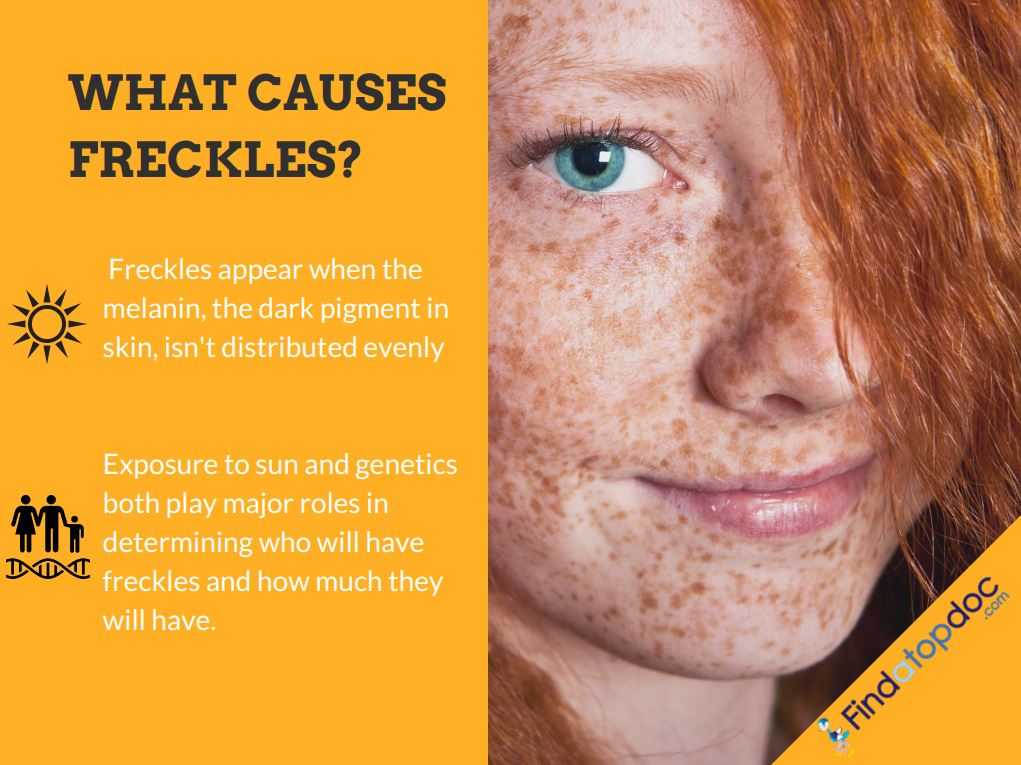
Source
How do you get freckles?
Ephelides: These freckles form as a result of sun exposure and sunburns. They can appear on anyone who doesn’t protect themselves from UV rays. They show up on your face, the back of your hands, and upper body.
What increases your chance for freckles?
The credit for freckles goes to both the natural environment and genetics. Your risk for burning can increase the incidence of freckles. In a study of 523 middle-aged French women, two elements predicted the presence of freckles: frequent sunburns and a gene known as MC1R, which provides instructions for making melanin. But the gene doesn’t affect all individuals the same way. There are two type of melanin: pheomelanin and eumelanin.